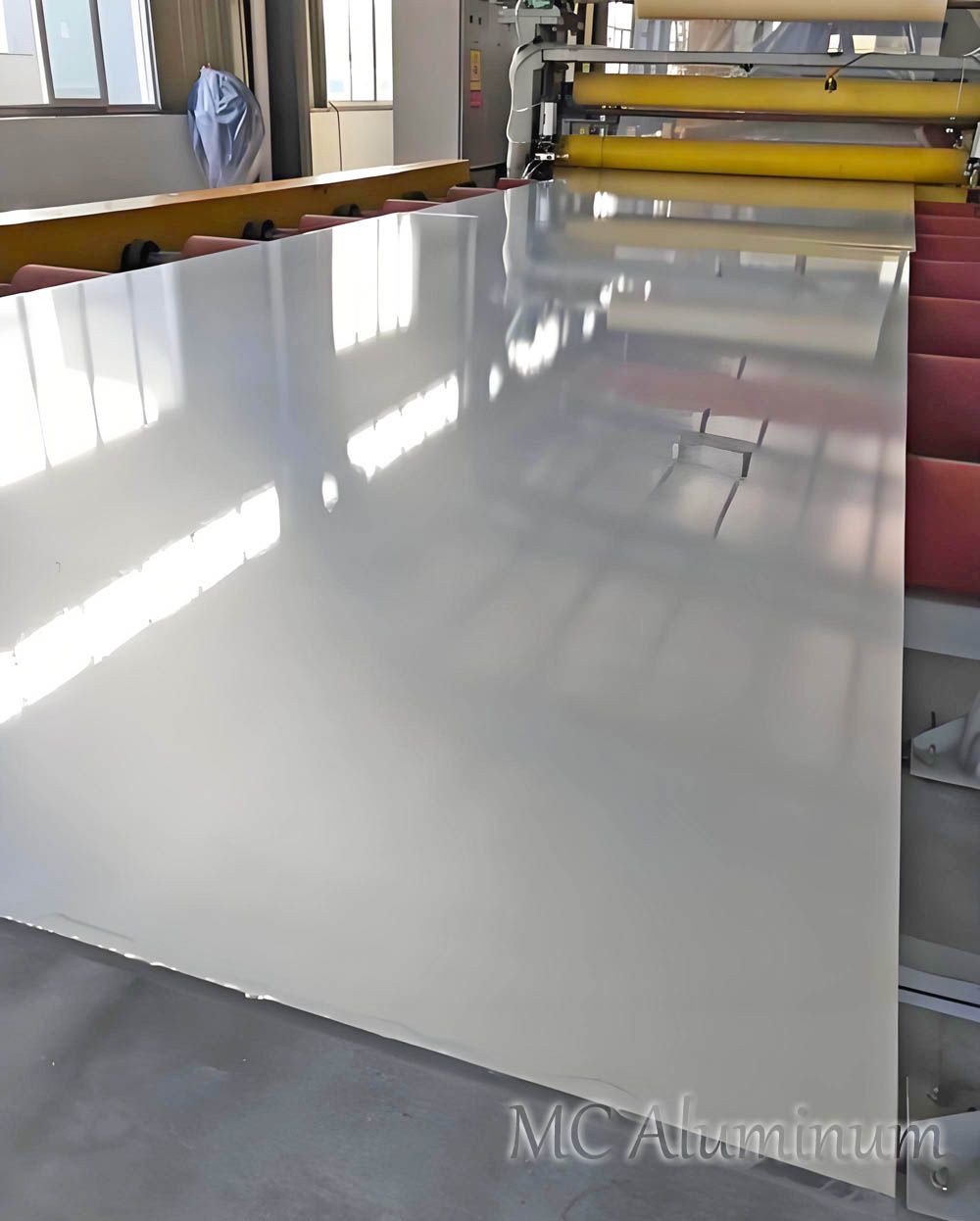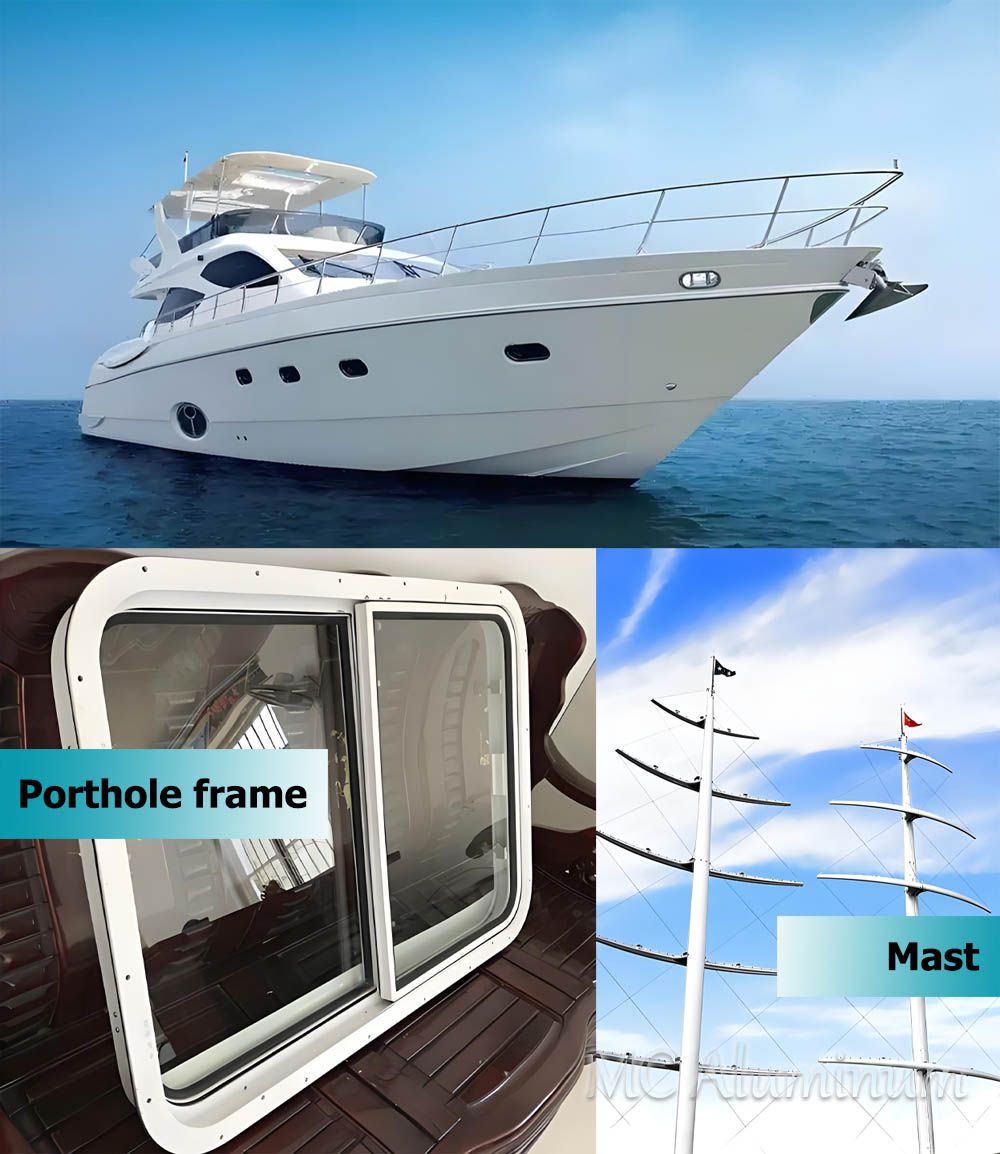Sale of Marine Grade 5086 H116 H321 H32 Aluminum Sheets and Plates
Marine grade 5086 aluminum alloy (tempers H116, H321, H32) is a key material in the shipbuilding and offshore engineering industries. Thanks to its high corrosion resistance, lightweight, excellent weldability, and controllable mechanical properties, it has become the preferred material for modern marine structure design. It is widely used in hulls, superstructures, decks, cabins, pontoons, and offshore platforms.
Introduction to 5086 Marine Aluminum
5086 belongs to the Al-Mg series anti-rust aluminum alloys, with magnesium as the main alloying element (content between 3.5% and 4.5%). It offers excellent resistance to seawater corrosion, outperforming 5052 marine aluminum alloy, making it especially suitable for high-salt, high-humidity marine environments.
MC Aluminum's 5086 marine-grade aluminum products are certified by CCS, BV, LR, and other classification societies, complying with international marine material standards. Available thickness ranges from 3mm to 50mm, with widths up to 2600mm. Custom cutting and heat treatment services are available.
Tempers of Marine Grade 5086 Aluminum Plates
MC Aluminum supplies marine 5086 plates in multiple tempers to meet specific application needs. Common tempers include O, H111, H112, H116, H321, and H32.
O Temper: Fully annealed, extremely soft, lowest strength but highest formability; suitable for applications where high formability is required without high strength.
H111 Temper: Strain-hardened with slight additional processing; offers better strength and corrosion resistance compared to O temper, ideal for marine use.
H112 Temper: Similar to H111 in strength and corrosion resistance; specifically designed for aluminum plates with good formability and weldability.
H116 Temper: Strain-hardened with excellent mechanical properties, including high strength and corrosion resistance; used for structural marine applications requiring enhanced durability.
H321 Temper: Stabilized temper achieved through strain hardening and artificial aging; provides superior strength, corrosion resistance, and stress corrosion cracking resistance, ideal for critical marine applications.
H32 Temper: Cold worked to about half-hard; offers a balance between strength and formability. While slightly less corrosion-resistant than H116 and H321, it is sufficient for general marine components.

Performance Advantages of 5086 Marine Aluminum Plates
1.Excellent Corrosion Resistance: Especially suitable for prolonged exposure to seawater and salt spray environments.
2.Good Weldability: Maintains high strength after welding, with excellent performance in the heat-affected zone.
3.High Strength: Higher yield and tensile strength compared to pure aluminum alloys.
4.Good Formability: Can be strengthened through cold working, adaptable to manufacturing complex structures.
Specifications of 5086 Marine Aluminum Plates
| Alloy | 5086 |
| Temper | O / H111 / H112 / H116 / H321 / H32 / H36 / H38, etc. |
| Thickness (mm) | 3–50 |
| Width (mm) | ≤3600 |
| Length (mm) | 500–16000 |
| Certificates | BV / DNV / ABS / Lloyd’s |
Chemical Composition of 5086 Aluminum Alloy (%)
| Alloy | Si | Cu | Mg | Zn | Mn | Ti | Cr | Fe | Al |
| 5086 | ≤0.40 | ≤0.10 | 3.5-4.5 | ≤0.25 | 0.20-0.7 | ≤0.15 | 0.05-0.25 | 0.05-0.25 | remainder |
Mechanical Properties of 5086 Aluminum Alloy
| Alloy | Temper | Tensile Strength/KSI | Yield Strength/KSI | Elongation/% |
| 5086 | O | 44 | 14 | 16 |
| H32 | 47 | 28 | 12 | |
| H112 | 35 | 14 | 14 | |
| H116 | 40 | 28 | 10 |
Application Areas of Marine 5086 Aluminum Plates
H116 Aluminum Plate
Hull Structures: Decks, bulkheads, keels, where high strength and fatigue resistance are required.
Offshore Platforms: Columns, beams, and other structures exposed to long-term seawater immersion.
High-Speed Vessel Hulls: Balancing lightweight and strength, reducing energy consumption with a density only 1/3 that of steel.
H321 Aluminum Plate
LNG Carrier Tanks: Inner linings and support structures, resistant to -163°C liquid nitrogen and stress corrosion, ensuring 25-year design life.
Naval Vessels: Missile launch wells, radar bases, requiring high stress-corrosion cracking resistance.
Polar Research Vessels: Ice-breaking bows and sides, requiring impact resistance; H321 maintains ductility at temperatures as low as -269°C.
H32 Aluminum Plate
Yacht Superstructures: Flybridges, window frames, and curved structures; easy formability reduces manufacturing costs.
Fishing Vessel Refrigerated Compartments: Inner linings and insulation layers, meeting insulation requirements with moderate strength.
Ferry Seating Frames: Lightweight designs improve passenger capacity, H32 formability suits ergonomic designs.

How to Choose the Right Temper for 5086 Aluminum Plates
1.Strength Requirements: Use H116 for load-bearing structures; H32 is sufficient for non-load-bearing parts.
2.Corrosion Environment: Select H116 or H321 for tropical marine areas; H321 is preferred for low-temperature regions.
3.Fabrication Complexity: Use H32 for complex curved parts, H116 for flat structures.
4.Cost Sensitivity: H32 is approximately 8%-12% cheaper than H116; H321 pricing is in between.
MC Aluminum, as a large aluminum processing manufacturer, provides a variety of marine aluminum plates, aluminum profiles, aluminum pipes, and aluminum-steel composite panels. Available alloys include 5083, 5052, 5754, 6061, 6082, 6063, and others. All products are certified by major classification societies and are exported overseas. We offer direct factory sales, competitive pricing, and sample availability.







Contact Us